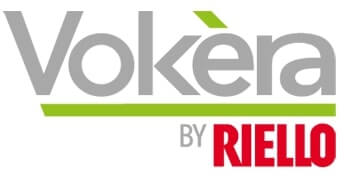Boiler flues are an essential component of heating systems, responsible for safely expelling combustion by-products from boilers.
The flue is a pipe or duct that is attached to the boiler unit, allowing exhaust gases such as carbon dioxide and water vapour to be carried safely outside the building, without exposing occupants to harmful emissions.
Without a boiler flue, there would be a serious risk of exhaust gases permeating the indoor air, posing health hazards. It is a mandatory component for every new gas boiler installation, as regulations state there must be a secure escape for waste gases.
Types of Boiler Flues

Telescopic Boiler Flues
A telescopic boiler flue is an adjustable flue system that can either be extended or retracted to ensure a good fit between the boiler and the exit vent. It’s a versatile option and can be used both vertically and horizontally and, as it’s adjustable, it’s ideal for those who may be unsure on the required flue length.
As you won’t need any additional parts, like flue extensions, installation is usually much simpler and quicker with no need to add or remove pipework. It’s worth pointing out that telescopic boiler flues can sometimes carry a higher price tag due to their adjustable features.
Advantages
-
Versatile and can be used both vertically and horizontally
-
Can be adjusted to fit different distances
-
Simple and quick to install
Things to Consider
-
Higher initial cost compared to conventional boiler flues

Vertical Boiler Flues
A vertical boiler flue is usually found extending from the roof of a building due to the boiler being located somewhere else besides an external wall. This allows any waste gases to vent vertically out through the roof. As gases naturally rise, this can make a vertical boiler flue more efficient.
These types of boiler flues are less common in domestic properties and are best suited for boilers which are located where venting through an outside wall isn’t possible. With the flue vent protruding from the roof, this helps to preserve the appearance of your outside walls. However, due to its location, a vertical boiler flue may be more prone to blockages which could result in more maintenance.
Advantages
-
More efficient due to venting gases vertically
-
Can preserve the appearance of outer walls
Things to Consider
-
Installation can be more complex
-
More maintenance may be required

Horizontal Boiler Flues
Horizontal flues are the most common type of boiler flue with the pipe exiting out of an outside wall and directly behind the boiler. They tend to be much easier and faster to install when compared to other flue types, making them a popular choice for domestic properties.
Their location allows for easy access when it comes to inspection and maintenance and, as no roof access is required, they’re less prone to leaks and blockages. That said, their horizontal position can allow for condensation buildup which, if not addressed, can result in corrosion.
Advantages
-
Quick and simple to install
-
Easy access for maintenance
-
Less prone to blockages
Things to Consider
-
Limited by their location
-
May suffer from condesation buildup
Key Boiler Flue Considerations
Accreditations
Ensure the flue has a CE or UKCA mark, as this indicates compliance with operational and performance limits and meets EEA legislative requirements. Boiler flues are crucial components of central heating systems, and must adhere to all regulations to ensure they’re safe.
Straight or Bent Flue
Opt for a straight chimney to ensure optimal performance, as bends can reduce efficiency. However, sometimes bent flues are essential to direct waste products out of the home. A flue’s travel length is decreased by 1m for every bend, so a boiler with a maximum flue length of 6m will be reduced to 5m if there is a single bend.
Windows and Doors
When installing a boiler flue, there must be a minimum distance of 200mm from a standard window that can be opened, 2,000mm below VELUX windows, and 1,200mm away from doors. A boiler flue should also be installed at least 200mm away from any air vents.
Neighbours
Current boiler flue regulations state that there must be a minimum distance of 600mm from a boiler flue and a neighbour’s property. If two boiler flues face each other, they have to be a minimum of 1,200mm apart. Also, it should be at least 2,000mm above ground level if it faces a pavement or public space.
Flue Extensions
Flue extensions are used to extend the length of a flue pipe and can be helpful if you want to alter the direction of waste gases or improve ventilation. Every boiler make and model has different regulations when it comes to boiler flue extensions. Some boilers can only be used with 1m boiler flues, while others can have flues of 20m. It’s important that you use the same brand of flue extension with that of your flue system.
Open or Closed System
A balanced boiler flue is a closed system meaning no air is exchanged between indoors and outdoors making them very safe. The closed system also prevents heat loss through the flue pipework increasing their efficiency. On the other hand, an open flue system removes waste gases via an external wall, while fresh air from inside the room enters the flue. This means ventilation around the boiler is essential for proper airflow, such as using air vents.








